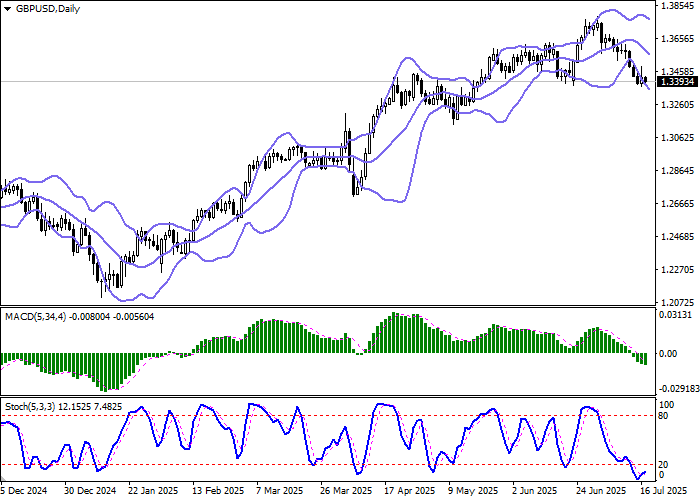Labor Market Resilient, But Inflation Surges Higher
Employment in the UK jumped by 134K in May, well above expectations of 46K and up from 89K in April. However, the unemployment rate ticked higher to 4.7% from 4.6%. Wage growth softened, with average earnings (ex-bonus) slowing from 5.2% to 5.0%, and including bonuses from 5.4% to 5.0%. June’s jobless claims also came in lower than expected at 25.9K versus the forecasted 17.9K.
Despite the strong jobs data, the spotlight remains firmly on inflation. The core annual CPI accelerated from 3.5% to 3.7%, while the broader headline measure climbed from 3.4% to 3.6%—an 18-month high and well above analyst forecasts of 3.4%. On a monthly basis, inflation edged up from 0.2% to 0.3%. This unexpected surge has added fresh hurdles for the Bank of England in its efforts to ease borrowing costs and support a slowing economy.
The latest report from the Office for National Statistics showed that the upward pressure came from rising fuel prices, as well as higher air and rail fares, clothing, and food costs. These price increases signal that businesses are still passing elevated input costs onto consumers. BoE Governor Andrew Bailey has warned that employers are cutting staff, hours, and pay after a hike in national insurance contributions announced by Chancellor Rachel Reeves, which took effect in April.
US Dollar Gets a Boost From Factory Data
Meanwhile, the US dollar remains resilient after upbeat US factory data. Industrial production rose 0.3% in June, rebounding from May’s -0.2% and beating forecasts of 0.1%. Capacity utilization also improved, reaching 77.6%. Producer price inflation eased slightly, with the PPI slowing to 2.3% from 2.6%, and the core reading dipping to 2.6% from 3.0%. Although these numbers point to cooling cost pressures, the Federal Reserve remains cautious, resisting calls from the White House to cut rates quickly.
Technical Analysis: Downtrend Extends, Oversold Risks Mount
On the daily chart, Bollinger Bands continue to widen to the downside, clearing the path for bears to test new local lows. The MACD indicator stays firmly negative, with the histogram well below the signal line, reinforcing the sell bias. The stochastic oscillator, having rebounded from oversold territory, is now turning higher—highlighting the risk of a short-term rebound if sterling becomes excessively sold off.

Key Resistance Levels
- 1.3450
- 1.3500
- 1.3562
- 1.3600
Key Support Levels
- 1.3364
- 1.3300
- 1.3250
- 1.3200
Trading Strategies for the Session
- Sell Scenario: Consider short positions after a confident break below 1.3364, targeting 1.3200. Stop-loss at 1.3450. Timeframe: 2–3 days.
- Buy Scenario: A rebound from 1.3364 with a subsequent breakout above 1.3450 may trigger new long positions targeting 1.3600. Stop-loss at 1.3364.
Key levels: 1.3200, 1.3250, 1.3300, 1.3364, 1.3450, 1.3500, 1.3562, 1.3600
Conclusion: Inflation Shock Raises Policy Uncertainty for Sterling
With UK inflation at an 18-month high and wage growth softening, the Bank of England faces renewed pressure to balance inflation control with the need to support growth. For now, GBP/USD remains vulnerable to further downside, though short-term oversold risks may spark a technical bounce.

